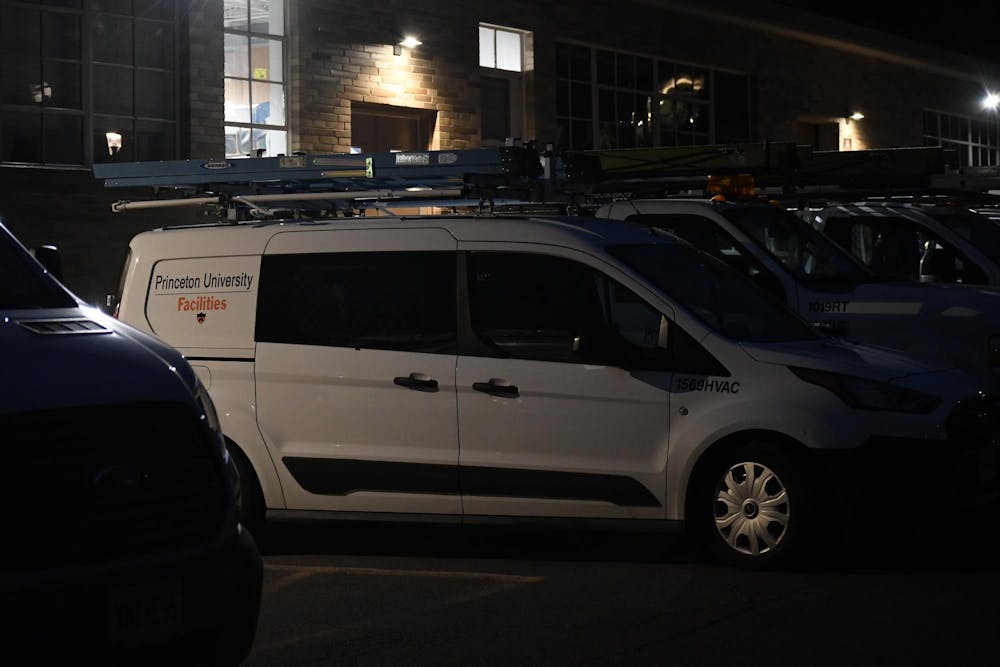University administrators have set the goal of decarbonizing our campus by 2046. To do so, the University has rolled out a sweeping operation to install a complex geo-exchange heating and cooling system, build out thousands of solar panels, replace the old bus stock with brand-new electric buses, and purchase electricity from renewable sources. The University thinks of these campus solutions as test cases that, in the words of President Christopher Eisgruber, “serve as models for the world.” To build on these successes, the University should now turn its attention to the rest of its vehicle fleet.
While the fleet is not the largest carbon emitter on campus, it’s still a significant source – at other universities, fleets can account for the equivalent of four to five percent of a campus’s direct carbon footprint. Although Princeton’s Sustainability Action Plan includes a call to reduce those fleet emissions, the University has not yet released a concrete set of proposals and standards for how it will achieve this goal. In today’s moment of campus expansion, it’s time for that to change. In order to do so, Princeton needs to create a centralized plan that minimizes fleet size and sets ambitious electrification targets.
Princeton’s various departments own around 900 vehicles: 429 of which are “highway legal” — a category that includes cars, trucks, and even motorcycles— and around 470 that are not, including many golf carts and small construction machines like boom lifts (the University's bus fleet is excluded from these number). The number of highway-legal vehicles around campus has increased by eight percent since 2018, according to comment from the Office of Finance & Treasury to The Daily Princetonian. These additions will likely only continue as Princeton expands its campus and the size of its student body.
Much of this fleet expansion is necessary — a growing campus means a growing need to transport staff to events, move maintenance equipment, and carry out ground operations. But every new vehicle means yet another cause of street congestion, another source of tailpipe air pollution, and another emitter of climate-deadly carbon dioxide.
Before buying any new vehicles, it’s crucial to figure out how much more fleet expansion is actually required. In the current system, when a University department, like Chemistry or Grounds and Maintenance, individually requests a new vehicle from Finance and Treasury, Facilities, or Transportation and Parking Services. These bodies approve or deny requests in part based on whether they think that the applying department actually needs the vehicle they requested. Application reviewers in these bodies, according to Finance and Treasury, expressly discourage departments from adding new vehicles to their stock if they do not feel the department actually needs the new vehicle.
However, it can be difficult to get a big-picture look at whether a new vehicle is needed, potentially making it harder for procurement decision makers to approve or deny requests. That’s because while individual departments may track the use or performance of their own vehicles, the University doesn't collect a holistic or uniform data picture of all departments' fleet use statistics, such as how often each vehicle is in use versus sitting unused in a parking lot. Without this kind of knowledge, a department may request a new vehicle even if they could simply use one of their current vehicles more, or one from another department, instead. In other words, they may ask for a new vehicle without realizing they already have one that’s sitting in a parking lot all day.
A centralized approach to monitoring vehicles, on the other hand, would allow the University to more accurately discern when a new vehicle is truly needed. The University could do this by installing monitoring devices across all departments to measure the distance that each fleet vehicle travels, making it easier to identify which vehicles a department could use more before resorting to purchasing a new one. That being said, these monitoring devices should be strictly limited to measuring vehicle miles traveled, to avoid the potential concern of worker surveillance. In conjunction, the University could set standards for when it’s appropriate to take out a vehicle, and when there are other options.
When a new vehicle is indeed needed, a centralized fleet plan could ensure that it meets certain emissions targets to align with University sustainability ambitions. Currently, departments are free to purchase a hybrid or electric vehicle if they want, but they are not obligated to do so, according to Finance and Treasury. This has resulted in some laudable progress, like the University's 17 new electric buses. But aside from that, out of the University's 429 highway-legal vehicles cited by the Office of Finance and Treasury, only four are electric.

Here, too, a central fleet system could help by applying the Sustainability Action Plan’s charge to reduce the fleet’s direct emissions, setting aggressive criteria and targets to cut emissions and transition the fleet to all-electric vehicles. In successive stages, that goal could incorporate a mandate for newly-purchased vehicles to be electric, following the example of the University of California school system or Columbia University. Then, it could require the gradual replacement of old combustion vehicles with their electric counterparts.
Amid a period of expansion, and as the University races to decarbonize along with the rest of the country, we must scrutinize and minimize all sources of emissions. That involves establishing a sensible and centralized fleet plan with the power to set tighter policies for buying new vehicles and to put in place ambitious electrification targets. If Princeton wants its campus to be a “model for the world” on sustainability, that model must cover all the bases, including the University fleet.
Columnist Alex Norbrook (he/him) is a sophomore from Baltimore, Maryland, intending to major in History or Politics. He can be reached at alexnorbrook@princeton.edu.









